StuZen
Overview
In 2018, one in five Americans experienced a mental illness and overall suicide rates have gone up almost 20% and despite these numbers, there is still a big stigma around mental health. Hasan Minhaj talks at length about how bad it is and why we should care. When I was working with Durga to help with victims of sexual harassment, I had realised that a large part of helping the victims would be to address the mental and emotional impact their adverse experiences had had on them, and to provide niche therapy. With that in mind, I knew that I wanted to use technology to work in the mental health domain. When I joined the University of Michigan, I soon realised that students here are plagued with mental health issues, and despite there being help, such as CAPS and The Wellness Zone provided by the university, there seemed to be still large gaps for help. I saw this as an opportunity to learn more and come up with a solution.
Skills honed
Over the course of 4 months, I undertook the task of working with different stages of the product development. I conducted need finding research and analysed data from those findings. Then I went over the requirements pertaining to mental health, specially of students to come up with a product design that might be helpful to the cause of wellness managment.

Problem discovery
Even before I reached out to potential stakeholders, I had found enough data online where meme literature pointed to the fact that mental health is a growing concern in an academic environment. Check out these screenshots from the school meme page. While meme pages aren't the most trusted source of academic information, they do depict a general sentiment toward a problem. Students have had to wait upto 25 days to recieve professional care for their mental wellness and that is problematic.
User Research
I identified students of the University of Michigan as my target user group. I conducted interviews to get an understanding of the pain points and needs and to better chisel my problem statement. I conducted over 30 interviews from a group of students aged 17-28 residing in Ann Arbor and enrolled in Undergraduate and Graduate courses at the University. These potential users were chosen from a variety of backgrounds, demographics and educational domains. These were semi-structured interviews scheduled for 30 min, and looked at answering the following overarching questions:
-
Are the stress levels induced by the academic life for real?
-
How does the stress from academic experience become a hindrance to tangible work?
-
What is your personal go-to task towards self-help?
-
What is your personal go-to task towards self-help?
-
What comes to your mind, when you think about mindfulness?

Findings from User Interviews
Even before I reached out to potential stakeholders, I had found enough data online where meme literature pointed to the fact that mental health is a growing concern in an academic environment. Check out these screenshots from the school meme page. While meme pages aren't the most trusted source of academic information, they do depict a general sentiment toward a problem. Students have had to wait upto 25 days to recieve professional care for their mental wellness and that is problematic.
Scenarios: Placing myself in the user's shoes
While brainstorming to get deeper into the user mindset, I started giving a deep thoughts into the various scenarios when StuZen can be of help. While solving for mental health was the overarching goal, it was important to determine WHEN users need products like StuZen. I started imagining more about the time of the day, the background settings and the overall scenario of a user in need. As a result, I drew out hand-made sketches to learn more. This step was important for both breaking down the larger problem into smaller subproblems and identifying which features will be most important for me as a designer.
Brainstorming solutions
Once I had a clear picture of my target users and the relevant scenarios, I focussed on brainstorming the possible solutions. I was faced with one personal dilemma at this point: Should I brainstorm before or after the market analysis? After a lot of deliberate thought, I chose for myself to delay the analysis of the market and competition for after my initial brainstorming. When thinking about all the possible ways that could work in the scenarios that I came up with, I jotted down these eight solutions that could be potential solutions that I would further build upon. Here are some that I came up with.
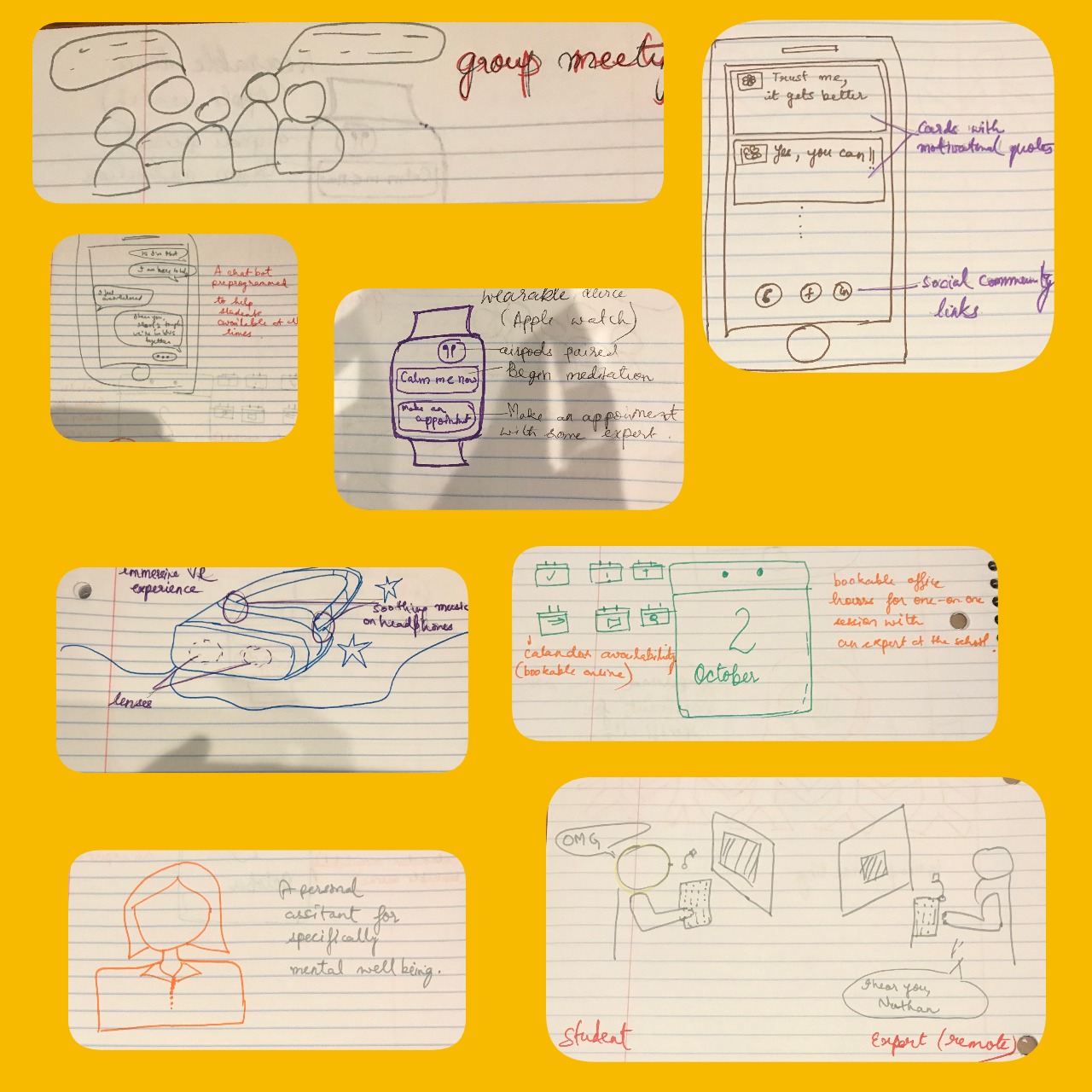
Competitive analysis
After an initial brainstorming to the point where I was out of creative juices, I did an initial research to find what has been done in this space in for both validation and opportunities. To my surprise there are 10,000+ apps on the stores catering to mental health needs. Only a very few of them are actually being used by large numbers. This lead me to infer two things:
1. There is definitely a need for the product, hence the hype in the space.
2. There is something that most of these solutions are missing out on, which lead to their failures.
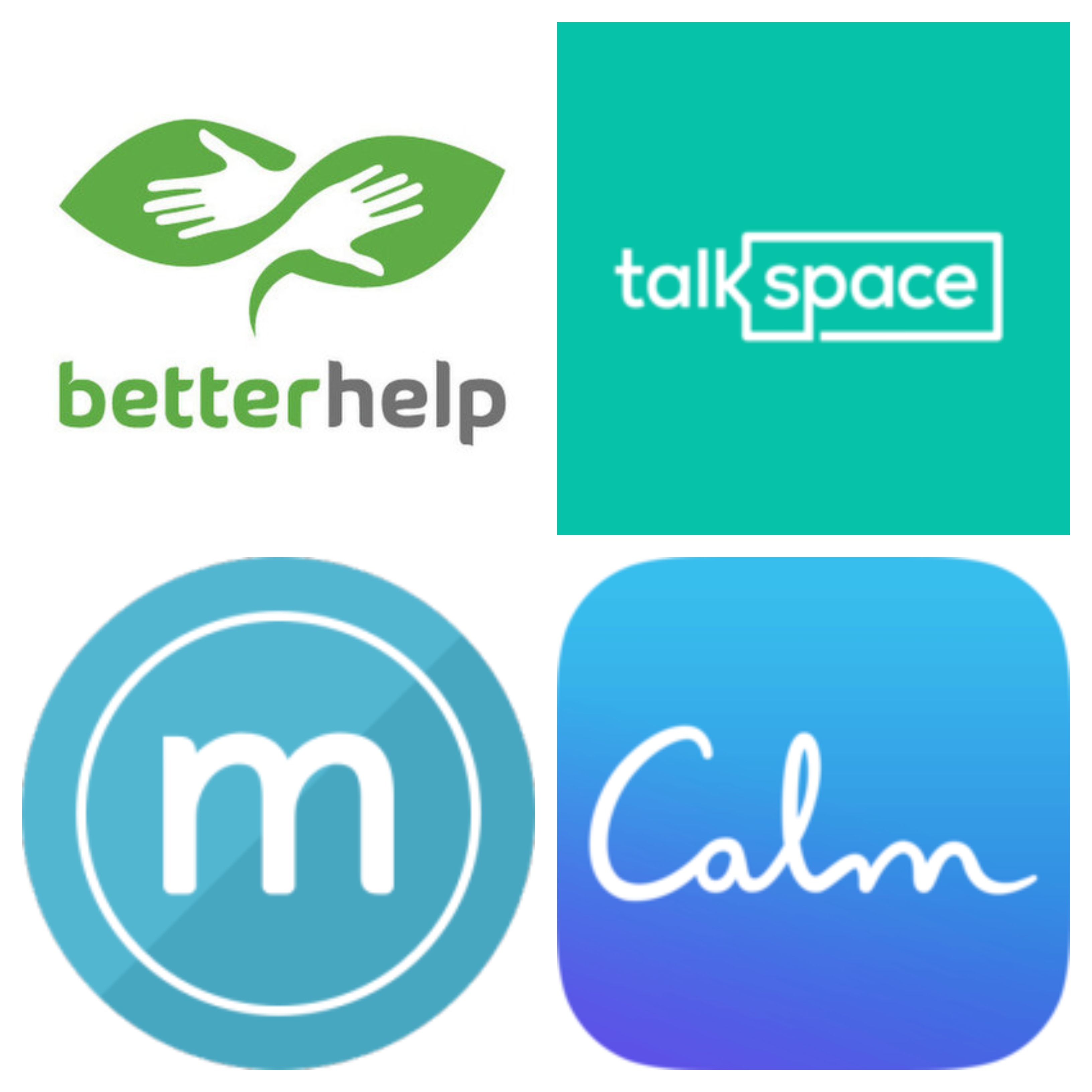
Why do Mental Health apps fail?
In order to learn what lead to the failure of these apps, I did a deeper research and found that most of these apps do not incentivize to people who actually have needs. This medium article dissected the space really well and pointed out a few learnings.
User Personas
I considered specifically my primary, secondary and anti personas to be more specific about who I am building the product for. Chalking down each of their behaviours, personalities, needs, goals and motivation helped me understand potential users on a deeper level. They vary in their role in the product their prior understanding of technology, mental wellness and more.
User Storymap
Based on my learings about the personas that I am building the product for, I broke down the steps that each of these personas would perform when using a product like stuzen. Although the goals and motivation of each of these personas were different, the paths taken by them often common. This meant that similar flows could accomplish varying tasks. Translating goals into small subtasks would go on to be the base of how the features would be designed.
User flow
Combining my ideas with the knowledge that I gain with the user interviews and competitive analysis, I jotted down a basic flow of what my product would look like once it goes live. This was the moment to pick out actual flows, chalk out interactions and visualise the various ways users should use the app. Here is a basis user flow that resulted from it:
Paper prototype
Keeping in mind that I had no idea how to build prototypes, I first did a paper prototyping to have physical interim between the user flow and the actual digital mockup. This step gave me a lot more perspective into what my app would look like when it would be built. This prototype helped me think about basic interactions such as scroll down, button tap, search, type, card view, etc. After a few iterations, I was ready with a clearer understanding of what I require of my product.
The Tools
A mobile app that enables students to have quick access to experts, be mindful and keep track of emotional wellness. The technology essential to keep this system running is a mobile app, built either with XCode and Swift for iOS or with Android Studio and Java/ Kotlin for Android. A backend server to store data entered by users and to display dynamic content to users.

Key Feature 1: Dynamic content
The home page of the app displays dynamic content loaded everyday so that when a user visits the app, they are welcomed with encouraging thoughts, quotes or even memes to let them know that help is available and they can manage whatever it is that they might be looking for help with. These appear as cards with quotes or thoughts, along with attractive images on them, animated when the users land on the home screen.This is made particularly keeping in mind that attractive design can be a good design(Norman, 2002).
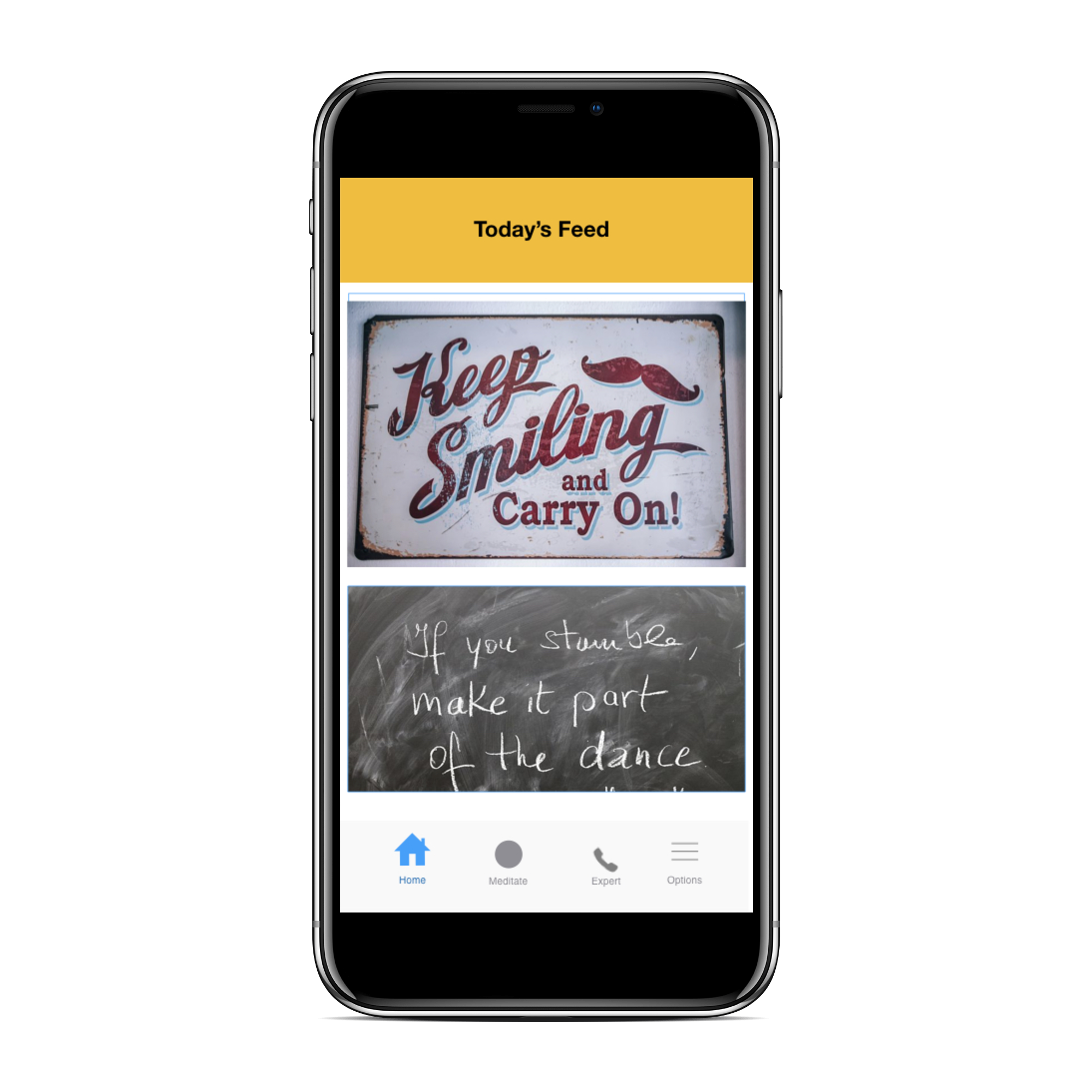
Key Feature 2: Immersive Meditation
This feature enables a user to perform a breathing exercise to help them calm down and reclaim their focus to put back into the tasks that they are upto. This feature allows the user to select from a wide range an ambience of their choice. Then they are taken through a 360 degree view of the chosen ambience with visuals and sounds. Along with the setup, they can opt in for a guided meditation session to perform a breathing exercise to breathing and help calm their mind.
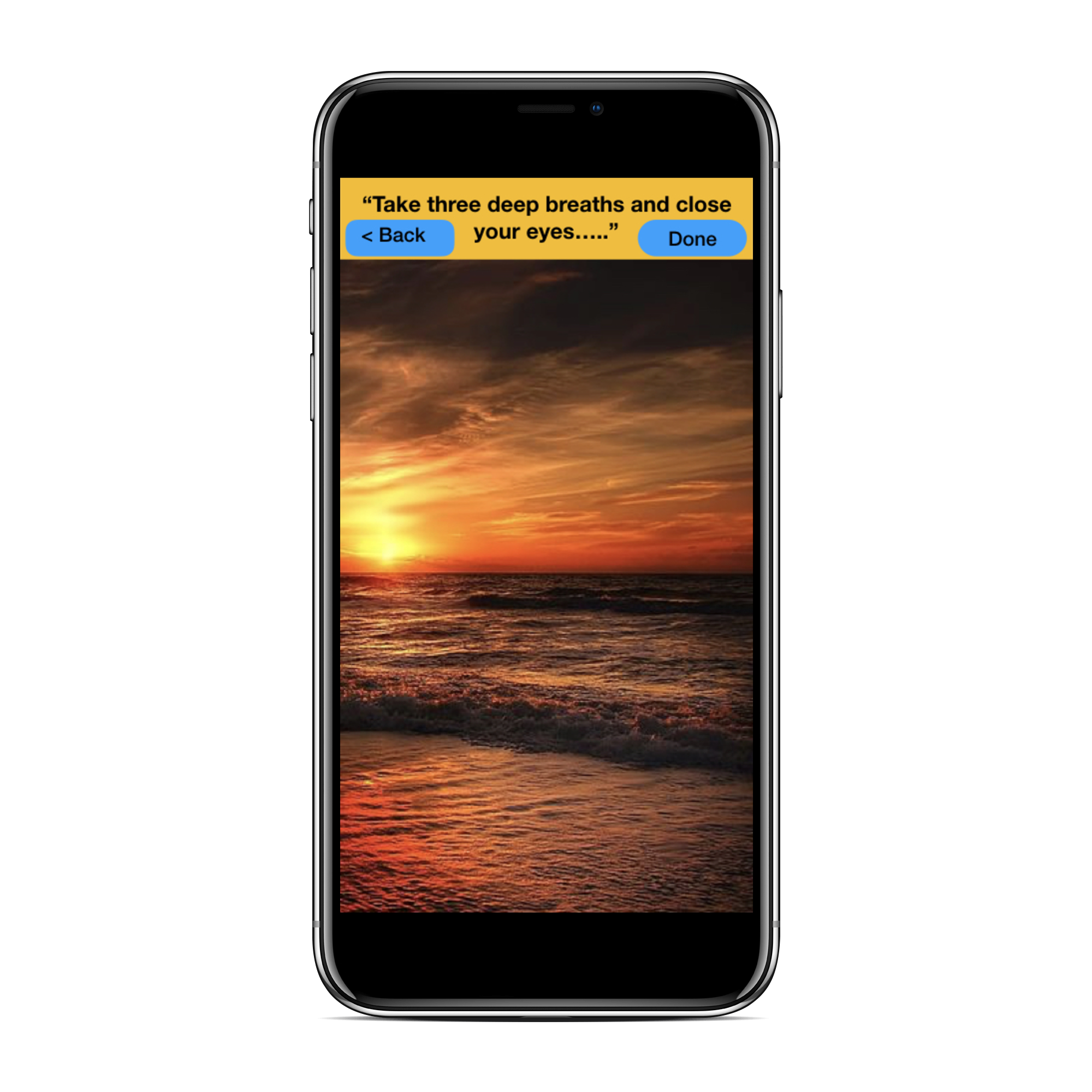
Key Feature 3: Consult an expert
The app provides the user to consult people who have the expertise to help with academic stress. These are people that users can talk to when they are looking for human interaction and sharing can help. This features enables users to select an expert of their choice based on their ratings and availability. The experts can be contacted via chat or phone call, both embedded within the app.

Key Feature 4: Track emotional wellness
If users choose to enable this feature, before each session, either meditative or with an expert, the user is expected to enter their state of mind, which is done using a (mandatory) slider of emotions and a (optional) text box to enter more using text. After the session the same process is repeated. Over a period of time, the app takes enough data in form of the slider and the text box, performs a sentiment analysis of the text from the text box to produce a chart to display how far along the user has come since they started using StuZen.
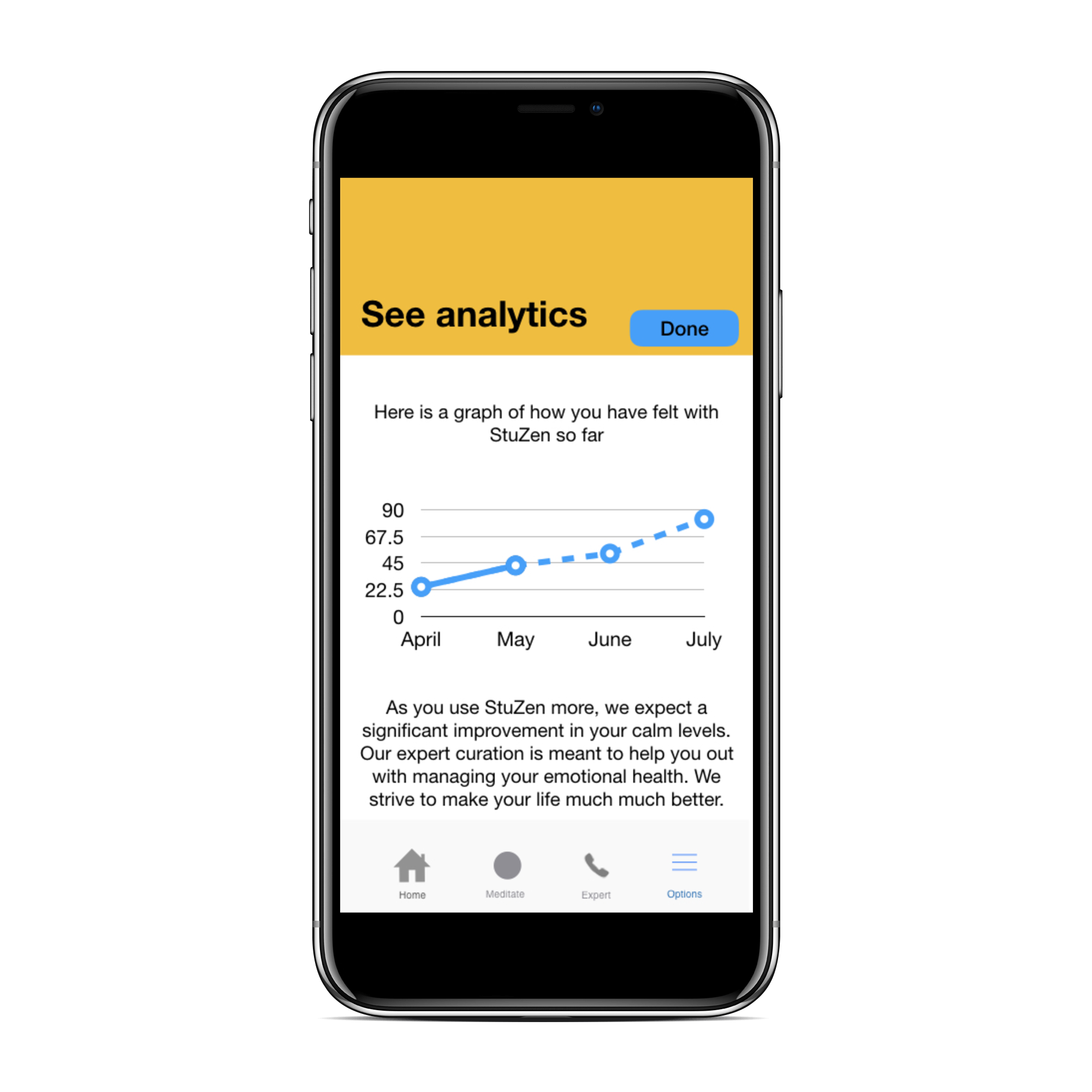
Social impact of StuZen
Students acknowledge that wellness is a problem that needs to be solved, but there is still rampant stigma around talking openly about mental health issues. Based on user interviews, it was found that students often do not want to seek external help when it comes to emotional well being. The students who do, are either not able to afford third party help or have to face long wait times at institutes provided by the university. These problems are more pronounced during high pressure times such as mid semester break or towards the semester end.
StuZen allows students to take agency of their own mental well being. This is achieved in two ways: First aid mental health solution: StuZen provides immediate help by either consulting an expert or performing a mindful exercise. This reduces the time that a student sits brooding on the problem at hand Long term solution: StuZen allows students to keep track of their own well being without involving an external agent. If larger number of students start using apps like StuZen and rely less on the current solutions, it might result in a reduction of the social stigma attached with self-care. Additionally, StuZen helps raise awareness about emotional well-being, thereby reducing the load on current institutes such as Counseling and Psychological Services (CAPS). Overall, StuZen helps students take ownership of their mental health by providing long term and short term solutions.
Lessons learned
Before starting the project, I was aware that this is a potentially big problem to solve, but when I conducted user interviews, it was a surprise to see that 100% of the users(there were 32 in total) acknowledged the need to have a wellness management device. I found that while there are several competitors such as Calm, Headspace and others, none of them do exactly what StuZen does. They serve one feature or the other, but not all. Furthermore, StuZen is a niche for students only. This is an area not explored much before even though there is evidence that warrants exploration of mental well-being of students in particular.
Another thing to note here is the fuzzy logic used to determine the tracking of emotional health. While sentiment analysis can be helpful, evidence suggests that it might not be very accurate. Moreover, from the user interviews, I found that upto 50% of the users will not use this feature as it either seems too burdensome or intrusive. When designing the solution, I became acutely aware of the fact that in spite of catering to several needs of Students’ well-being, StuZen is still not a one stop solution to complete mental wellness, because often times, the problem lies in identification and acknowledgement when it comes to mental well being. In order to have a solution that truly affords mental well being, there must be an aspect of actively raising awareness about well being and the positive aspects of self care.
Next Steps
I would like to find out how this product would actually work with real users, so I am working on developing the iOS app to release it on the App Store. I am also continually reviewing users to get a better understanding of user needs and pain points. In addition, I am enrolled in the class ENTR 599 for Winter 2020 to look at StuZen as a product that can bring a change in the real world.


